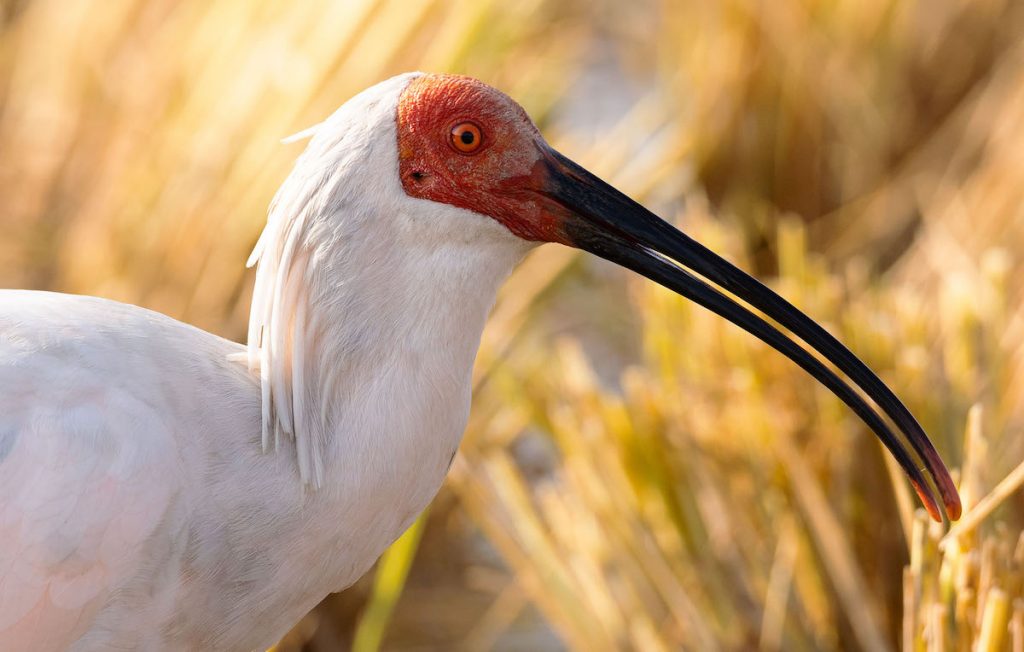このページを 日本語 で読む
Sado Island in Niigata Prefecture boasts abundant nature and wildlife. It is the only place where the Japanese crested ibis, a once-extinct bird designated as a national treasure, has successfully been returned to the wild.
Photographing the crested ibis has been my work since 2020 when I left my position as a photographer for the Sankei Shimbun newspaper and moved to Sado.
My pictures of the ibis and other rare migratory birds and creatures that I encounter will provide you with close-up glimpses of Sado's wildlife. Only through the lens of a camera can we see these animals in such detail. I hope to convey a sense of Japan's biodiversity and the importance of protecting the nature that nurtures this wildlife.
Extinction and Return
The scientific name for the crested ibis, called toki in Japanese, is Nipponia nippon. It is classified in the order Pelecaniformes, or waterbirds. Once a common sight in rice paddy fields and forests around Japan's largest island of Honshu, it was considered a pest and overhunted. The bird's pale pink, or toki-iro, plumage was another factor in overhunting. The use of pesticides and deforestation also degraded the habitat of the ibis leading to a decline in its population.
In 1981, the Japanese crested ibis disappeared from the wild with the capture of a wild ibis in Ishikawa Prefecture. An attempt was made to breed the ibis in captivity on Sado Island. However, the last domestic crested ibis, named Kin, died in 2003, marking the extinction of the species in Japan.
Subsequently, a pair of crested ibis gifted to the Emperor from China were bred artificially, and birds were first released on Sado Island in 2008. The release of birds continued and via a process of trial and error, the number of ibis established on Sado increased to more than 500.
A Cautious Approach
On Sado Island, one can now see flocks of crested ibis returning to their roosts. However, photographing them is a different story. The crested ibis are timid animals. If approached, they may abandon their nests and never come back. Care must be taken not to rob the ibis of their habitats.
For this reason, there are rules for observing and photographing the crested ibis. To avoid startling the birds, pictures must be taken from inside a car. The photographer must also keep the lens inside the car to avoid reflecting light.
Protecting Habitats from Herbicides
For most rice paddy fields on Sado Island, farmers do not use herbicides. The crested ibis cannot survive without the frogs and insects that serve as their food.
In order to maintain these feeding grounds, the work of mowing grass falls to the people. Having done the work myself, I know that just when you think you have gotten the grass cut, it has already grown back. The battle against grass and weeds is a constant.
Summer to Autumn
The summer of 2023 was one of recording-breaking heat. The ibis will soon shed their dark feathers and their pale pink plumage will reappear.
The landscape of this satoyama is protected by human hands. It is only through the efforts of those who nurture nature that the habitats of these birds can be maintained.
Click here to read more Sado Wildlife in Focus photo essays by photojournalist Fumie Oyama.
Fumie Oyama is a two-time winner of the Japan Newspaper Publishers & Editors Association Award as a photographer for the Sankei Shimbun. After covering the reintroduction of the crested ibis to the wild for 11 years, Oyama left the company in 2020 to move to Sado Island. There, he continues to photograph the ibis and other wildlife while engaging in farming. He currently promotes the charms of Sado Island as a photojournalist. Follow Fumie Oyama on Instagram.
このページを 日本語 で読む
